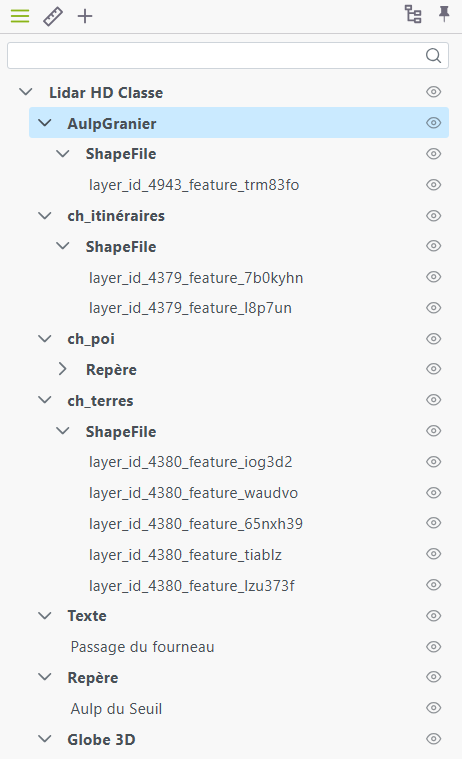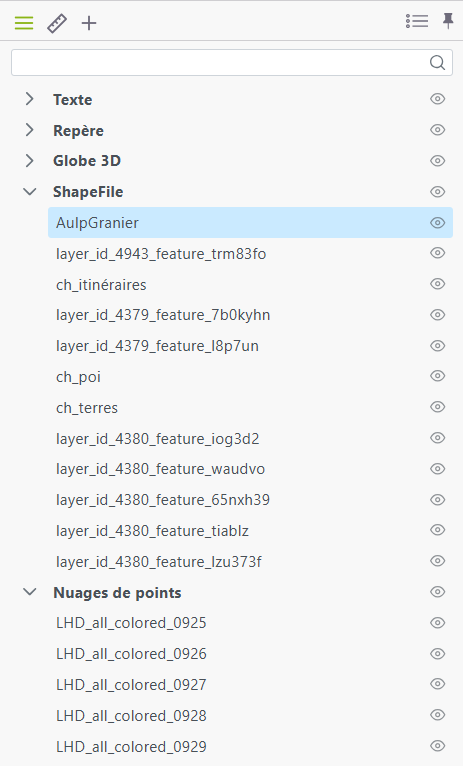Scene Tree
The 3D scene tree is the hierarchical structure of objects and groups of objects within a 3D scene. It defines the relationships between different elements in the scene and enables effective management and organization of objects within a complex scene.
Free Grouping Organization
Free grouping allows users to group objects in the scene according to specific needs, regardless of object type. This method is oriented towards “business” objectives and offers maximum flexibility to organize objects based on project goals. In this mode, 3D objects of different types (such as point clouds, meshes, or annotations) can be grouped together within the same group.
The advantage of this method is that it enables users to act on all objects within a group simultaneously, regardless of their type. For example, it is possible to hide or show all objects within a group with a single action.

Use case:
In a linear project, entities may need to be grouped by kilometer segments. Each group would be named after a segment and contain 3D data (point clouds, meshes, etc.), cross-section profiles (measurements), and annotations. This allows for an organization focused on project segments, making it easier to manage and view each segment.
Automatic Grouping by Type
Automatic grouping by type organizes objects in the scene based on their nature (e.g., all meshes, all point clouds, all annotations, etc.). In this mode, user-defined business groupings are ignored, and objects are grouped solely by type. This method is oriented towards “data type” management.
The advantage of this method is that it allows users to act on all objects of a particular type at once. For example, to hide all point clouds in the scene, simply make the “point clouds” group invisible. This organization is especially useful in complex projects with a large number of objects of different types, as it saves time and improves scene management efficiency.

Use case:
In the same linear project as the previous example, users might want to hide all annotations to extract an ortho-image of the point clouds. By using type grouping, simply hide the “annotations” group, and all objects of this type will be hidden, regardless of their business grouping.
Using Both Grouping Modes
The two grouping methods are complementary and can be used interchangeably, without the need to permanently choose one or the other. You can switch between them using the dedicated icon located at the top right of the scene tree.

These grouping options allow for optimized management and manipulation of objects within a complex 3D scene, providing increased flexibility for users based on their specific needs.